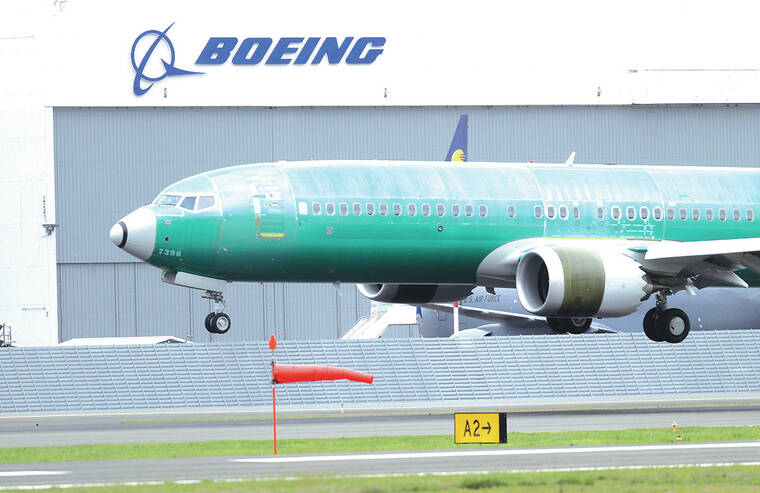Investigators say they confirmed pilots’ account of a rudder-control failure on a Boeing Max jet
Federal investigators said Thursday they confirmed pilots’ account of a brief failure of rudder controls on a Boeing 737 Max after it landed at Newark Liberty International Airport in New Jersey last month.
United Airlines pilots said pedals that control rudder movement on the plane were stuck as they tried to keep the plane in the center of the runway during the Feb. 6 landing.
The pilots were able to use a small nose-gear steering wheel to veer from the runway to a high-speed turnoff. The rudder pedals began working again as the pilots taxied to the gate with 155 passengers and six crew members on the flight from Nassau, Bahamas, according to a preliminary report by the National Transportation Safety Board.
Boeing said this is the only rudder-response issue reported on a Max, although two similar incidents happened in 2019 with an earlier model of the 737 called NG or next generation, which has the same rudder-pedal system.
The manufacturer said the issue was fixed by replacing three parts. The plane has made dozens of passenger-carrying flights since then, according to data from FlightAware.
United said the parts were related to a landing feature that was designed for other airlines, and United has only nine planes with those parts. The airline said it will work with Boeing, the NTSB and the Federal Aviation Administration “on next steps for these aircraft.”
The NTSB said preliminary information from the plane’s flight data recorder, one of the so-called black boxes, confirmed the captain’s description of the event. United was able to recreate the same problem on the 2-year-old plane during a test flight at the Newark airport three days later, and reported the problem to the NTSB.
Mechanics couldn’t find an obvious cause for the malfunction during an inspection, but they replaced parts of the rudder control system, and the plane operated normally during a second test flight, the NTSB said.
The NTSB said that when it subjected one of the removed parts to cold for one hour in a laboratory, it failed to produce the torque needed for the rudder pedals to work. The NTSB said it plans further testing of the part.
Pedals in the cockpit control the rudder, which is attached to the vertical part of the tail and can be used to point the nose of the plane left or right.


